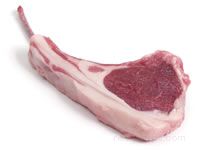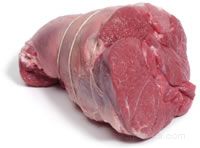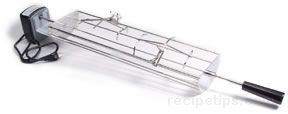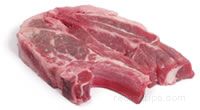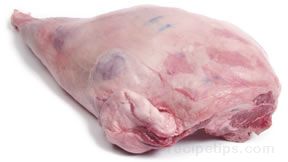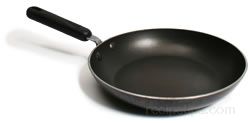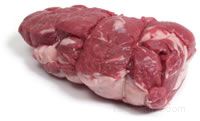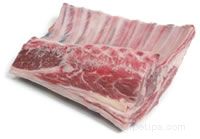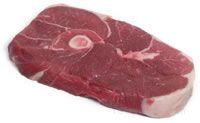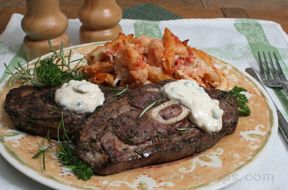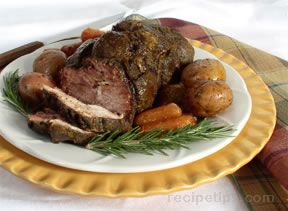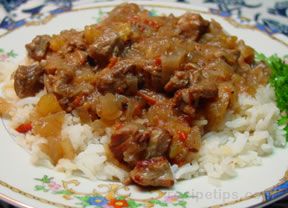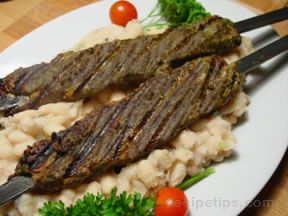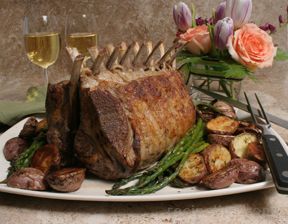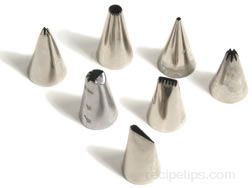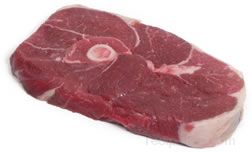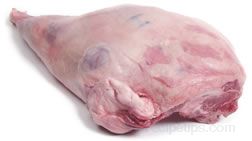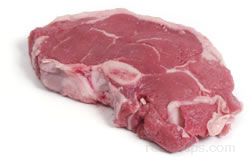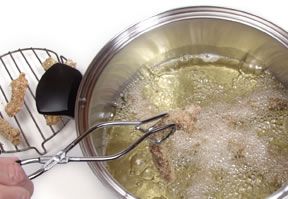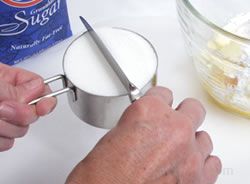|
Shopping | Roasting | Grilling and Broiling | Sautéing
General Safety and Handling | Ground Lamb Safety and Handling | Nutrition
Shopping
- When shopping for lamb, select lean cuts and use low fat cooking methods such as roasting, broiling, grilling, braising, or stewing.
- When purchasing packaged fresh lamb in a food store, the packages should be cold and the meat should be firm. The packaging should be in good condition with no tears or holes in the wrapping.
- Lamb that has dried out edges and does not smell fresh, should not be purchased. Lamb that has a slimy feel should be avoided.
- Excess liquid may indicate that the lamb is old or has been stored at the incorrect temperature. It may also indicate that the meat has been previously frozen. Lamb that has little excess liquid in the package is the best to purchase.
- Cuts of lamb may vary in color from pink to light red but should always look fresh, not dull or slimy. The fat should be white and waxy looking. The bones should be reddish in color and moist.
- If you plan to grill lamb chops, you will get the best results if you choose rib, loin, or sirloin chops. If your recipe calls for chops to be marinated and then baked, shoulder chops are a much better choice.
Roasting
- Roasting at high heat for the entire cooking time maximizes the brown crusty surface, but this method shouldn't be used on large pieces of lamb because the surface will dry out and may burn before the interior is done.
- Roasting at moderate heat maximizes juiciness and minimizes shrinkage. Leg roasts are often cooked this way.
- An alternative method for roasting lamb is to begin with a temperature of 425ºF - 450ºF for an initial 10 - 15 minutes to brown the meat and then continue cooking at 325ºF to the desired doneness.
- To prevent lean cuts from drying out while cooking, the meat may be rubbed with oil prior to roasting and/or basted with pan juices during roasting.
- The only reliable guide for making sure that a lamb roast has reached a particular stage of doneness, is with the use of an accurate meat thermometer. The meat thermometer should be inserted into the meatiest part, not into fat or against a bone. It's a good idea to plan where you'll insert the thermometer as you prepare the roast.
- Although the fat keeps the meat moist and tender during the roasting process, it can be trimmed before serving because it is not very flavorful and is actually quite unpleasant after it has cooled.
Grilling and Broiling
- Meat for grilling or broiling should be tender, fairly lean, and not too thick, since it needs to cook quickly. Lamb cuts that are good choices for grilling or broiling include chops, tenderloin, kebabs, and patties of ground lamb. Legs to be grilled are often butterflied, to provide a more uniform thickness.
- When grilling or broiling, thinner cuts of lamb can be closer to the heat source than thicker cuts, since the thicker cut will require more time to cook.
- If a thicker cut of lamb is too close to the heat source, the surface will char before the interior is cooked to the proper degree of doneness.
- In either grilling or broiling, meat should be turned when it's half-done, using tongs to avoid puncturing the meat.
Sautéing
- Lamb for sautéing should be tender and not more than an inch thick.
- When sautéing lamb, it is important that the meat surface is dry so that when it is placed into the pan, it browns rather than steams.
- When sautéing, the pan should not be crowded; cook in small batches if necessary.
General Safety and Handling
- Make sure that lamb is among the last items selected when shopping, so that it is without refrigeration for as short of time as possible.
- Make sure that any juices from raw lamb do not come in contact with any other food items. Packaged raw lamb can be placed on a plate in the refrigerator to ensure that none of the juices drip onto any other food items in case that there is a leak in the package.
- Frozen cuts of lamb should always be thawed in the refrigerator and never on the countertop.
- Raw lamb that has been thawed should be used as soon as possible. It should never be refrozen because this increases the risk of food poisoning when the meat is finally used.
- Lamb that has been ground, cut into chunks for stew or kabobs, or cut into strips for stir-fry is much more perishable than larger cuts of lamb. This is because there is more exposed surface area, which increases the risk for bacterial growth.
- If lamb has been marinated, the marinade should be discarded because of its contact with the raw meat.
- Do not allow lamb to reach room temperature before it is cooked, as this can promote the growth of harmful bacteria. Lamb, like most other meats, should be cooked as soon as possible after its removal from refrigeration.
- Leftovers should be placed in the refrigerator or freezer as soon as the meal is over. Lamb should not be away from refrigeration longer than 2 hours after cooking. Cooked food left at room temperature for more than two hours should be discarded.
- When eating outdoors, food should not be consumed that has been without refrigeration for more than an hour, especially in hot weather. Always have a cooler with ice handy.
- Traditional guidelines state that lamb cooked very rare, rare, medium rare, or medium should have an internal temperature ranging between 115ºF to 145°F. With increased concern over bacteria that may be present in the internal portions of lamb , it is now recommended that whole lamb cuts be cooked to a final internal temperature (after resting) of not less than 145°F.
Ground Lamb Safety and Handling
- Frozen ground lamb should be defrosted in the refrigerator and never at room temperature.
- Ground lamb should be cooked as soon as possible after it is defrosted.
- Ground lamb patties should not be cooked unless they have fully thawed. A frozen or partially frozen patty will not cook evenly and the center will not cook to the proper temperature even though the outside may be completely cooked.
- Ground lamb should be purchased before or on the "sell by" date or "last date of sale" and then used within 2 days of purchasing.
- It is recommended that ground lamb dishes such as meatloaf and moussaka be checked for doneness with a meat thermometer. This is especially important when the lamb has been blended with dark sauces that can mask the color of the meat, making it difficult to determine if any pink color remains, which would indicate that the meat is not fully cooked.
Nutrition
- Careful inspection of lamb in the United States makes it safe to eat. Because of strict codes, there is little concern that lamb provided to the consumer will be infected with animal diseases which may be harmful to humans.
- It is recommended that no more than 300 mg. of cholesterol per day should be consumed, so 2 or 3 servings of lean lamb per day allows plenty of room before reaching the maximum recommended level.
- Trimming the excess fat is helpful in reducing saturated fat and cholesterol, however doing this before the lamb is cooked can make it tougher and less flavorful, especially if the meat is broiled, roasted, or grilled.
- It is usually preferable to trim the fat after cooking because the fat layer protects the meat from drying out during the cooking process. Some of the fat melts during cooking and is absorbed into the meat. This acts as a natural tenderizer, but also adds some saturated fat and cholesterol to the meat.
- If the fat layer is left on, it should not be consumed, because it is not very flavorful on its own and is actually quite unpleasant after it has cooled.
|







